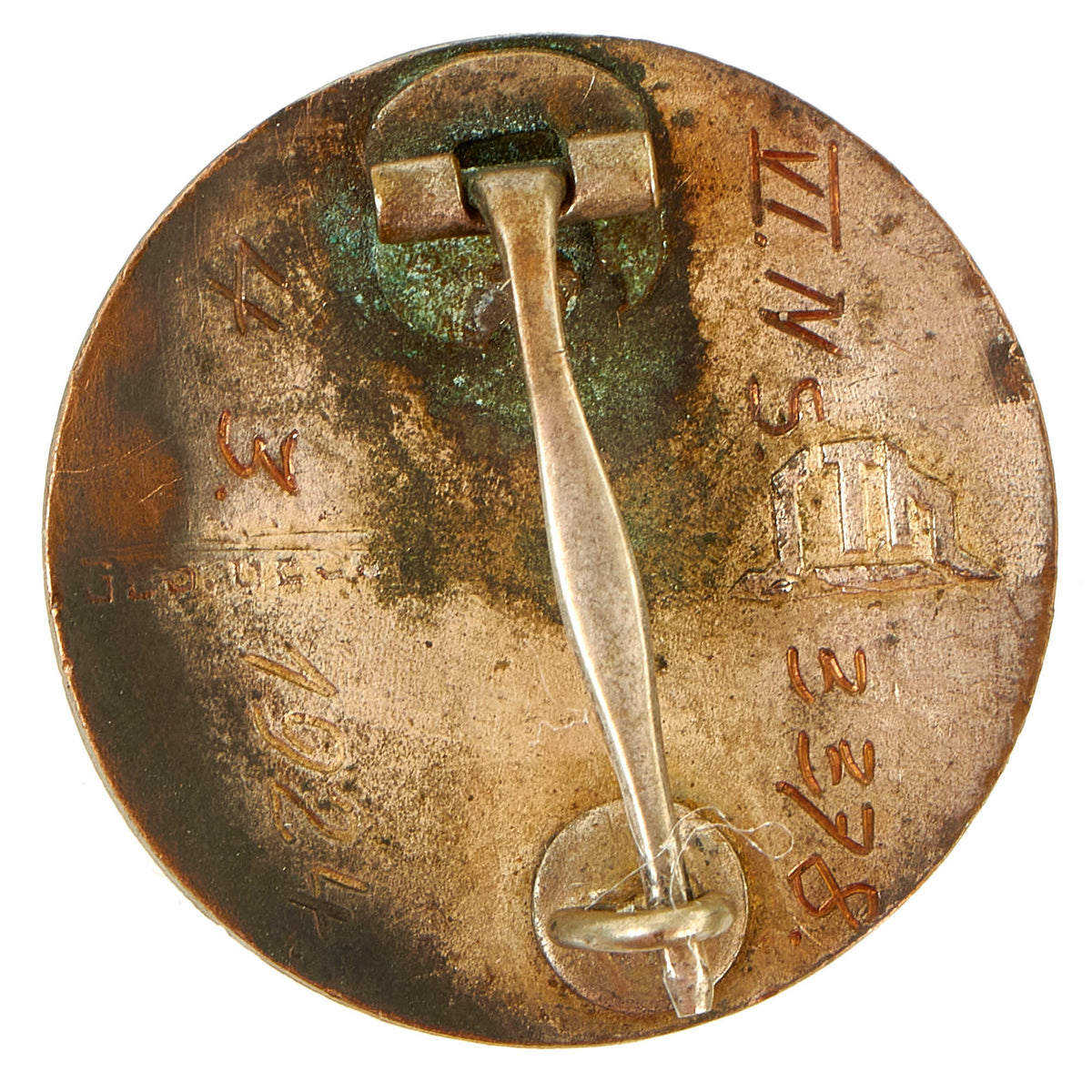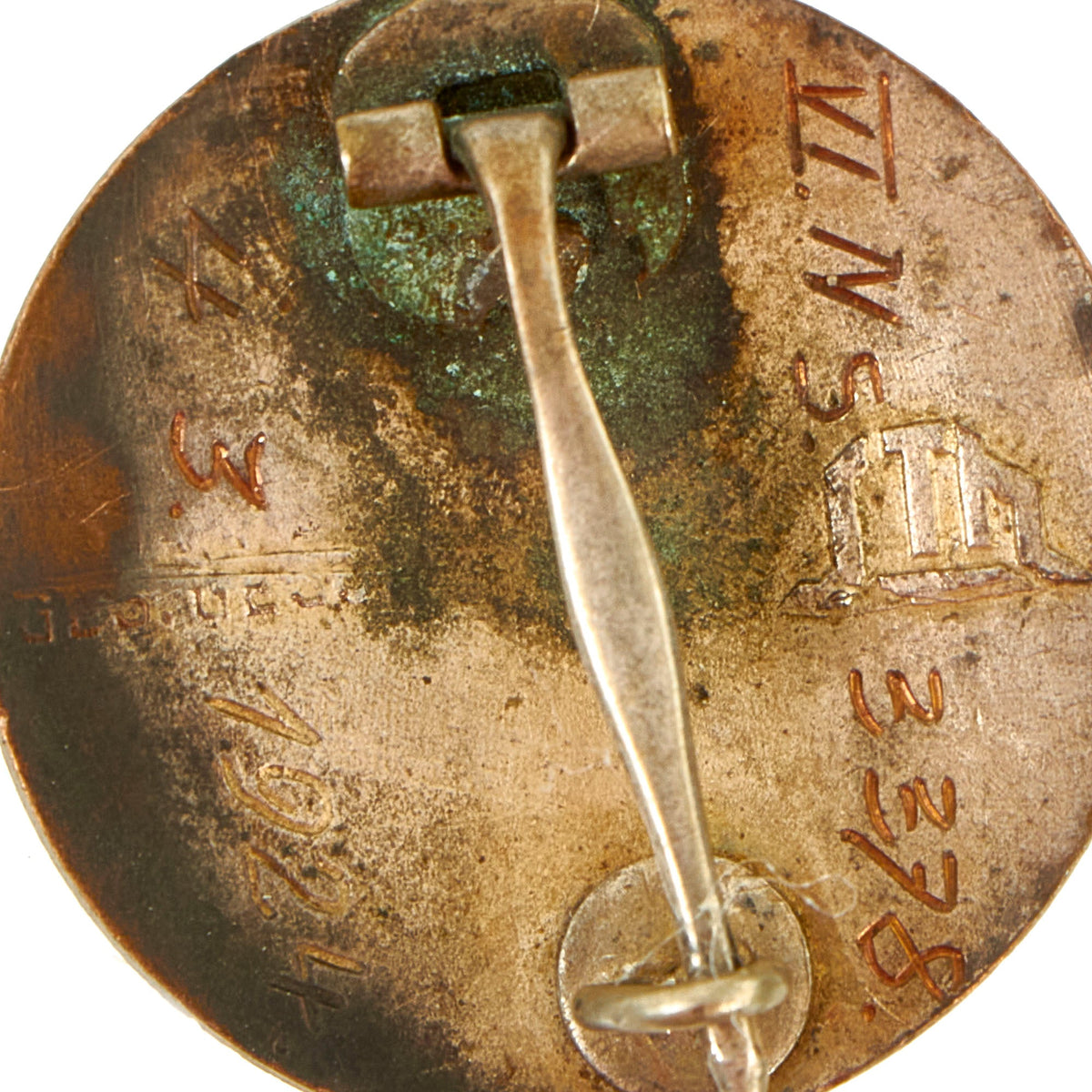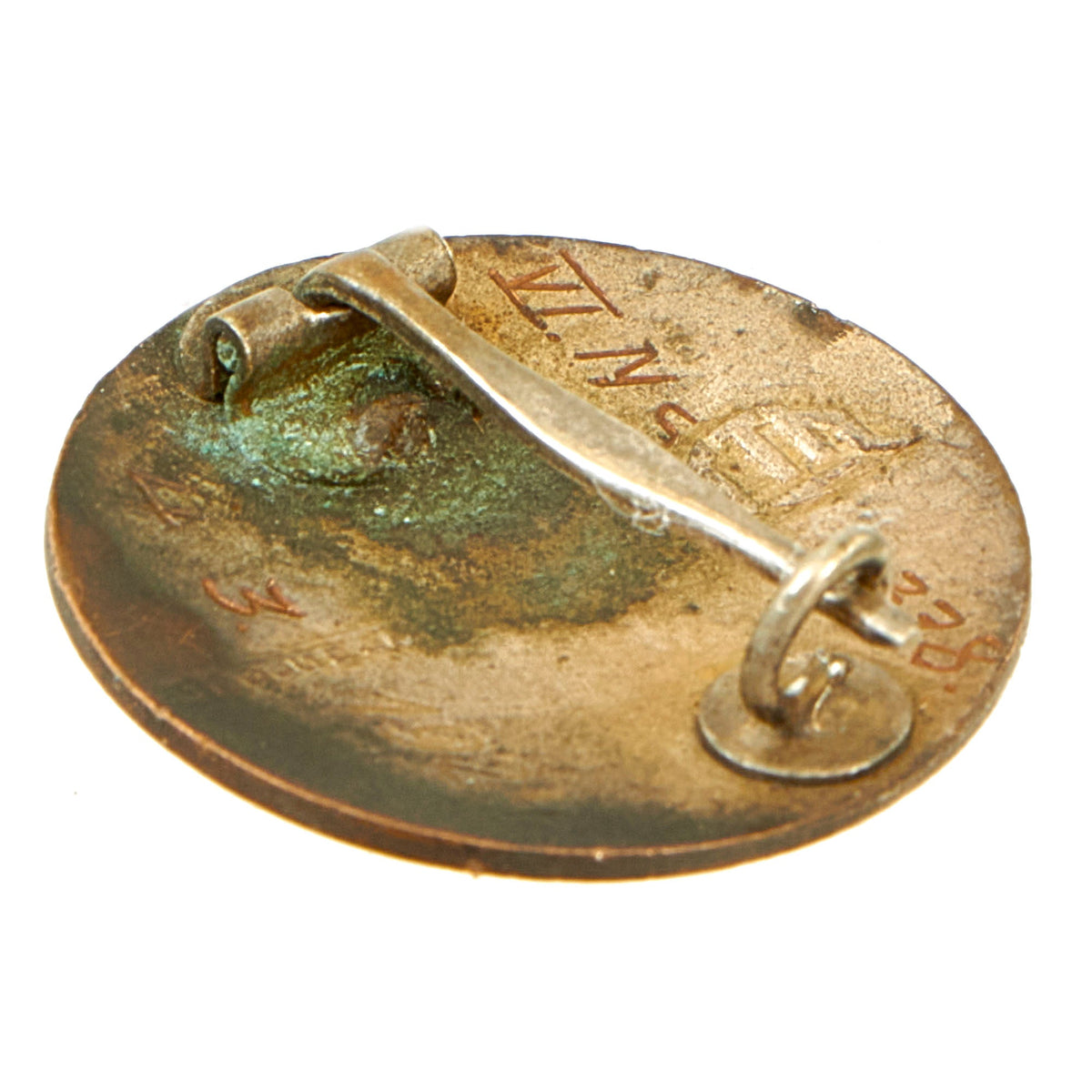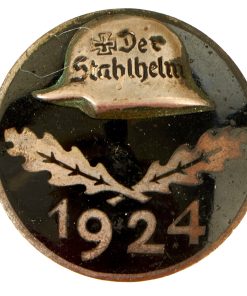Original German Weimar Period Der Stahlhelm 1924 Commemorative Membership Badge – Der Stahlhelmbund Original Items
$ 195,00 $ 78,00
Original Item: Only One Available. Der Stahlhelmbund (The Steel-helmet-league) was conceived as a national veterans’ organization by Franz Seldte in November of 1918, and was officially founded on Christmas day of that year. It was mostly comprised of WWI veterans trying to assimilate back into what was then a devastated society. The Stahlhelm became the largest of the post-war veterans’ groups, incorporating many of the smaller Freikorps groups into it.
Most of its members were assimilated by the SA in 1933, and it was disbanded in 1935, with its remaining members absorbed by the DRKB (Deutscher Reichskriegerbund), which, in turn, was absorbed by the NS-RKB (Nationalsozialistische – Reichskriegerbund) in 1938.
This is a very nice 1924 Commemorative membership badge (Erinnerungsabzeichen) for “Der Stahlhelm”, which is 30mm in diameter, with a black enamel background. It features a stahlhelm at the top, over crossed oak leaves and a 1924 date. The stahlhelm has an Iron Cross where the vent should be, and is embossed in German blackletter type with Der Stahlhelm.
The rear of the badge features an S T H makers mark, as well as GES. GESCH., indicating it is a protected design. The badge is also marked with the membership number VI. N5. 3378 as well as with the date 4. 3. 1924., both of which are scratched into the rear of the badge. It features a functional pin and catch on the rear, and is in overall very good condition.
A very nice piece of Weimar period German militaria!
The Weimar Republic (Weimarer Republik), officially the German Reich (Deutsches Reich), also referred to as the German People’s State (Deutscher Volksstaat) or simply the German Republic (Deutsche Republik), was the German state from 1918 to 1933. As a term, it is an unofficial historical designation that derives its name from the city of Weimar, where its constitutional assembly first took place. The official name of the republic remained the German Reich as it had been during the German Empire because of the German tradition of substates.
Although commonly translated as “German Empire,” Reich here better translates as “realm” in that the term does not necessarily have monarchical connotations in itself. The Reich was changed from a constitutional monarchy into a republic. In English, the country was usually known simply as Germany, and the Weimar Republic name became mainstream only in the 1930s.
Fast Shipping with Professional Packaging
Thanks to our longstanding association with UPS FedEx DHL, and other major international carriers, we are able to provide a range of shipping options. Our warehouse staff is expertly trained and will wrap your products according to our exact and precise specifications. Prior to shipping, your goods will be thoroughly examined and securely secured. We ship to thousands clients each day across multiple countries. This shows how we're dedicated to be the largest retailer on the internet. Warehouses and distribution centres can be located throughout Europe as well as the USA.
Note: Orders with more than one item will be assigned a processing date depending on the item.
Before shipping before shipping, we'll conduct a thorough inspection of the items you have ordered. Today, the majority of orders will be delivered within 48 hours. The delivery time will be between 3-7 days.
Returns
The stock is dynamic and we cannot completely manage it because multiple stakeholders are involved, including our factory and warehouse. So the actual stock may alter at any time. It's possible that you may not receive your order once the order has been made.
Our policy is valid for a period of 30 days. If you don't receive the product within 30 days, we are not able to issue a refund or an exchange.
You can only return an item if it is unused and in the same state as the day you received it. You must have the item in its original packaging.
Related products
Uncategorized
Armoured Fighting Vehicles of the World: AFVs of World War One (Hardcover Book) New Made Items
Uncategorized
Uncategorized
Uncategorized
Uncategorized
Uncategorized
Uncategorized
Angolan Rebel 1970s era 60mm Inert Display Mortar from Angolan Civil War Original Items
Uncategorized
Uncategorized
Uncategorized
Band of Brothers ORIGINAL GERMAN WWII Le. F.H. 18 10.5cm ARTILLERY PIECE Original Items
Uncategorized
Uncategorized
Uncategorized
Uncategorized
Uncategorized
Uncategorized










































































